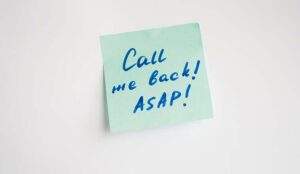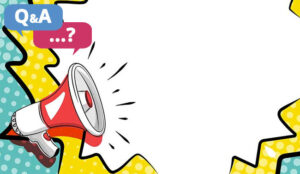It’s simple to throw technology or people at the challenge of managing call-backs in the call centre but it’s far more difficult to manage the process to deliver optimal outcomes. Richard Farrell explains how it can be done.
Time to answer is consistently the biggest cause of annoyance in the call centre. Customers also perceive that delays are longer than they actually are.
This tends to cloud the issue of inbound demand by making multiple attempts. The Varney report found one caller who had made 125 attempts to reach a call centre!
To manage call-backs, the starting point is to understand why they are there first place.
Often it is a manual solution to the challenge of having too few agents available to handle inbound demand. Agents are deployed to ‘call snatch’ to take limited caller details or calls are routed to voicemail with the expectation that there will be a call-back at a later time.
The simple answer is to employ more agents at the peak intervals in order to improve service level to the point where no call-backs are required.
However, there are two flaws to this answer:
- Economics – It may be too costly to employ the desired number of agents to attain a service-level target.
- Variable demand – Even with the best forecasting available to hit a high service level, actual demand will vary and is often out of the control of the call centre.
We’ll leave the topic of ‘failure demand’ to one side for now as well as the issue of calls outside service level.
The commercial reality is that there will be intervals when there are too few agents or too many calls to deliver the desired service level. What can be done?
The simple aim of a call-back process is to shift some inbound demand to outbound call-backs, at a time when there are sufficient agents.
This is when a number of other factors impact on the management of the process.
The key factor is the expectation that is set with a customer for when a call-back will be made and the ability of the call centre to deliver against that expectation. How can this be achieved?
How Long Will a Caller Wait?
There are a number of factors that will determine how long a particular caller will be prepared to wait for a call-back, and these are closely linked to the ‘Seven Factors of Caller Tolerance’ explained by Brad Cleveland and Julia Mayben in Call Center Management on Fast Forward (ICMI Press, 2008):
- Degree of motivation – How important is the call to the caller? How badly do they need or want the product, service or information you offer?
- Availability of substitutes – Can they find a solution elsewhere, for example, websites, walking down the street to a store and reading the manual.
- Your competition’s service level – Is competition available? If your company is a bank and your customer has a problem with an online payment, another bank is not going to be able to help in this case.
- Level of expectations – The experiences callers have had with the call centre, as well as the reputation that the organisation or industry has for service (or the level of service being promoted), have a direct bearing on tolerance.
- Time available – How much time does the caller have to accomplish the call? Retired people may have more time or inclination to wait than other customers.
- Who’s paying for the call? Callers are usually more tolerant when they are not paying for calls.
- Human behaviour – The weather, the caller’s mood and the day’s news all have some effect on caller tolerance.
Many call centres offer a call-back expectation of 30 minutes. Call centres with fewer substitutes available may be able to extend that expectation to 60 minutes or even several hours.
Failure to Complete a Call-Back
Failure to complete a call-back within the expected time scale can lead to more inbound calls from seriously unhappy customers: ‘You said you’d ring me back but you didn’t’ or an inbound call to a competitor who can make a sale. Call-back success rate is therefore the critical measure of success for a call-back process.
So, we have set up an expectation with a caller that they will have a call-back within an acceptable timescale. How do we make sure that happens?
It is necessary to make any process as efficient as possible and typically this means an automated solution; something that doesn’t need a live agent to capture details, transcribe voicemails and make manual dials.
It’s vital to ensure that there are not more call-back requests than can be adequately handled. This is achieved by setting limits of capacity based on the trade-off between customer and agent time.
Estimated delay before a call-back should be dynamically calculated at the call handling platform based around the call-back system’s capacity to deliver. Basically, when requests can’t be handled within a time frame, the expectation set for future callers must change.
Make Sure You Can Deliver
If call-backs can’t be handled in an acceptable time, the call-back offer should be removed.
Once a realistic estimated wait time is played to a customer and a call-back offered within an acceptable time scale, the call should be routed to an automated system to capture call-back details, thus leaving all agents to handle customer calls.
Automated Call-Back Systems
An automated call-back system can deliver the call-back to an agent within the expected delay and automatically call the customer.
Re-try attempts should be automated to maximise success rate and minimise agent intervention. This is best achieved with telephone calls rather than desktop applications.
Call-backs will require sufficient agents to complete. It’s not the answer if agent occupancy is very high.
Advanced users of call-back systems plan to have fewer agents available at peak times in order to maximise occupancy and productivity.
Because callers perceive delays to be very annoying and are satisfied with call-backs, it is possible to deploy fewer staff in peak times yet still deliver a great experience.
Agents are also satisfied with call-backs as the conversation with the customer starts with ‘Wow, thanks for calling back’ instead of ‘Do you know how long I’ve been on hold?’
Effective call-back deployment delivers great benefits to customers, agents and the organisation. A real ‘win-win-win’!
Written by: Richard Farrell, Chief Technical Officer at Netcall
For more on managing calls in the contact centre, read these articles next:
- Ways to Reduce and Improve Call Transfers
- 10 Ways to Reduce Repeat Calls in Your Contact Centre
- How to Use Mock Calls to Improve Agent Performance – With Free Exercises
Author: Richard Farrell
Reviewed by: Hannah Swankie
Published On: 25th Nov 2009 - Last modified: 10th Sep 2025
Read more about - Technology, Call Handling, Customer Experience (CX), Customer Service, Occupancy, Richard Farrell












































How can abondonment rate be effectively reduced
Great article. Just to add some vendors to consider are Qology (reselling Virtual Hold Technology) and Q4U from CT Solutions (Nortel Integrated Callbacks)
To answer the question posted by Molex back on Dec 8th, the callback service aims to reduce Abandon Rates by offering callers a callback option in advance of the “average time to abandon”. You will normally get at least a 50% take up rate from callers who will accept this option rather than remain on hold. The key then to selecting the right callback service is how they actually work – i.e. does the callback service get hold of an agent before calling the customer, does it use predictive appraoch etc. Either way the abandon rates will come down 🙂
this info appears to be more from a mabagers prospective… anything for agents on the same subject.
Post removed, no advertising please!